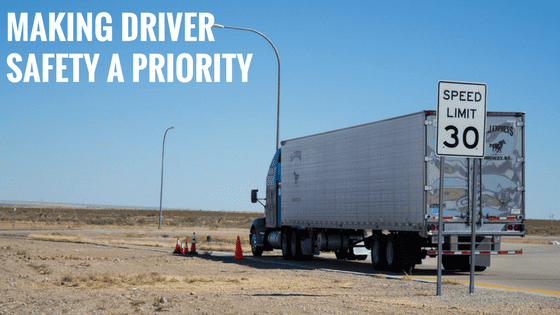The Federal Motor Carrier Safety Administration or FMCSA regulate safety and fleet managers to improve safety in an effort reduce crashes and other incidents before they occur. To this end, fleets are encouraged to better equip their drivers to be compliant with rules and regulations. Here are some tips to make sure you and your organization are doing everything possible to make driver safety a priority:
Hire Good Drivers
The first step to avoid a problem is by hiring drivers with a good Motor Vehicle Report and run them regularly on current drivers. Past performance is a strong indicator of future behavior issues. If you set high standards and look for the best candidates then you will avoid a lot of future issues. The FMCSA requires that an MVR is pulled on every driver every 12 months, but a good practice is to run them every other month to know of any issues as soon as possible.
Driver Training
Once you have hired and maintained good drivers, the next step is to continue to educate your drivers about the details of the Compliance, Safety, Accountability Program (CSA). Many drivers don’t know enough about how to comply with the CSA; so take the time to explain what is expected of drivers and the severity of the repercussions of violations. The best practice is to require new hires to complete Hours of Service (HOS) and Defensive Driver Training within 30 days of the hire date. In addition to that, drivers should be aware of how to find the FMCSA regulations on logging hours and vehicle maintenance.
It is important to understand that not all violations are the same and it’s important that drivers understand the top violations. Fleets should also focus on the most common violations such as defective reflective devices and damaged windshields, to make sure drivers are avoiding them.
Additionally, pre-trip inspections should be mandatory. Drivers should be well trained to inspect the truck and have a well-formed habit of doing so on a continual basis.
Culture of Organization
Be sure to discuss safety on a regular basis. Communication is key and a sign in the break room may not cut it. An effective safety committee is a more safety-conscious way to continue driver’s learning and prevent mistakes.
In the event of an accident, the safety committee will dig deep into the situation and figure out if an accident could have been avoided. Aside from the CSA score, the goal is to keep your drivers safe. Hold everyone accountable and establish the authority to make company-wide changes to make this happen.
Management Policies
Ensure that safety management has policies in place that establish roles, responsibilities, and standards for hiring drivers. Be sure to have a commitment and established policies with managers to address and practice safety standards. This includes disciplinary policies that drivers are required to sign in agreement. This is something that should be standard at the time of hire and filed in the employee’s personnel file so that the driver clearly knows what is expected and what disciplinary action will occur if necessary.
Incentive
Positive reinforcement is a great way to build an incentive program. Rewarding positive behavior helps drivers respond better to policies especially when you have their input. Discuss the various behaviors you want to reward and have them help come up with creative ways to reward it.
Finally, conduct a complete internal audit annually to keep your organization and your team accountable. Emphasis on training rather than discipline will often give you the best results and keep your team a happy, more cohesive community to work strongly together day after day and year after year.

